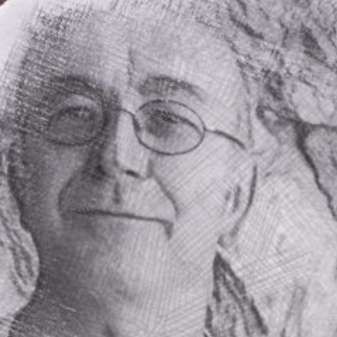Edinburgh's New Town Concerts Society boasts a fine string quartet pedigree: they hosted the Emerson Quartet's 2004 Edinburgh debut; the Lindsay Quartet played a complete Beethoven cycle for them in 2001. Now, in their 50th anniversary season, the tradition continues with the fine young players of France's Quatuor Ebène. Having heard this quartet in the Queen's Hall's wonderful chamber music acoustic in 2013's Edinburgh International Festival, I was very much looking forward to their return visit.
Consulting my review of 2013's concert I note that they opened here with the same work, Haydn's 1797 String Quartet in C major, Emperor Op.76, no 3. It was pleasing that some features seemed new to me and others consistent with memory. The beautifully delicate playing in the Poco adagio cantabile where Haydn varies his own hymn to the Kaiser – the tune later to become the anthem "Deutschland, Deutschland über Alles" – was equally striking on this occasion, with some particularly fine playing from leader Pierre Colombet. I noted this time that there was no necessity for eye contact in the first variation where Colombet's descant decorated second violinist Gabriel Le Magadure's theme. I also recalled the cello's many pedal notes, providing by turns tension and joy, but was this time newly struck by the instrument's energising trills. It was clear from the opening bars' excellent balance and wonderfully cohesive phrasing that we were safe yet exciting hands.
The closing Finale: Presto featured some thrillingly frenzied playing, beginning in the cello before moving throughout the quartet. The stern minor opening yielded to a major key central section in with some finely articulated counterpoint. At the movement's close there were whoops of delight from the balcony. When young people can make us whoop for Haydn, there is hope for the future.
Dutilleux, a name all too rarely seen in concert programmes, was the rarity which drew me to this concert. Conrad Wilson's fine programme notes mentioned the 1976 Ainsi la Nuit (Thus the Night) being based on a hexachord – the ingredients being C#, G#, F, G, C, D – and explained the modern idiom. However, across the seven nocturnally titled sections, there are traces of impressionism and even romanticism and all three were deftly negotiated here. One particular moment grabbed my ear as something I felt sure I'd never consciously noted: a simultaneous accelerando and decrescendo. This moment of rapid evaporation was very attention-grabbing, like any sound one hears, or imagines hearing in the night. Dutilleux, in the hands of Quatuor Ebène, seems capable of wringing every possible sound out of the quartet medium: pizzicato, con sordino, glissando, double-stopping and harmonics belied the work's economic forces. I'm sure I couldn't have been the only one to wonder how such a colourful composer would treat larger, more varied instrumentation. The quartet's ability to turn on a sixpence was very impressive as was the balance, particularly in the opening Nocturne's pointillistic moments. I couldn't resist a peep at the music still sitting on stands during the interval. Having wondered how chamber musicians manage timing in such changeable works, I was intrigued to note that the cello part's final page boasted three staves, presumably to elucidate the work's tantalisingly mercurial matrix.
The most symphonic sounds were rightly reserved for Brahms' 1873 String Quartet in A minor Op.51, No 2. Where appropriate, the sound was full and rich. When, as happened in the opening Allegro, the dynamic suddenly reduced, the effect was striking. This movement also boasted some fine parallel melody playing between the violins and excellent demarcation between confidently strident, simple harmonies and more tentatively searching chromaticism.
The following Andante moderato, in the key of A major seemed to convey a mood which, while not describable as straightforwardly happy, was certainly less grumpy. The Menuetto: Allegro was more unmistakably joyous and featured some very fleet of foot articulation. The three upper strings, in parallel against the lone cello, wove some fine harmonies. The energy of the Finale: Presto was infectiously communicated, all the more so when contrasted with ghostly pianissimo before a final accelerando and crescendo resumed previous celebratory levels. Audience response to this final item was both warm and vocal.
Aware of audience expectation of a jazz encore, something of a Quatuor Ebène trademark, cellist Raphaël Merlin, explained that the arrival of their new violist, Adrien Boisseau, had exerted an understandable pressure on rehearsal time. When we learned that we had witnessed the new line-up's first performance of the Dutilleux and second of the Haydn, the evening's wonderful ensemble playing seemed all the more stunning. They bid us goodbye with Bach's harmonisation of In Dulce Jubilo which, for me, summed up the evening: not a melody underpinned by subservient harmonies, but four vital lines in democratic communion.


